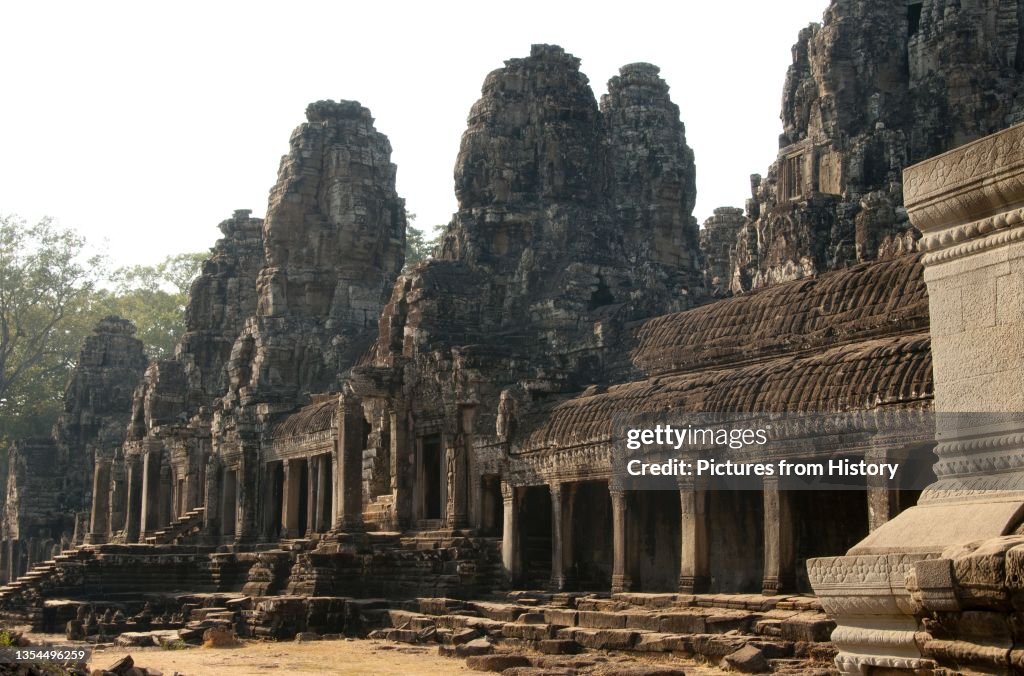Cambodia: Late afternoon at the south inner gallery and central sanctuary of the Bayon, Angkor Thom, Angkor
The Bayon was originally the official state temple of the Mahayana Buddhist King Jayavarman VII. The Bayon, at the centre of Angkor Thom (Great City), was established in the 12th century by King Jayavarman VII. Angkor Thom, meaning ÔThe Great CityÕ, is located one mile north of Angkor Wat. It was built in the late 12th century CE by King Jayavarman VII, and covers an area of 9 km_, within which are located several monuments from earlier eras as well as those established by Jayavarman and his successors. It is believed to have sustained a population of 80,000-150,000 people. At the centre of the city is Jayavarman's state temple, the Bayon, with the other major sites clustered around the Victory Square immediately to the north. Angkor Thom was established as the capital of Jayavarman VII's empire, and was the centre of his massive building programme. One inscription found in the city refers to Jayavarman as the groom and the city as his bride. Angkor Thom seems not to be the first Khmer capital on the site, however, as Yasodharapura, dating from three centuries earlier, was centred slightly further northwest. The last temple known to have been constructed in Angkor Thom was Mangalartha, which was dedicated in 1295. In the following centuries Angkor Thom remained the capital of a kingdom in decline until it was abandoned some time prior to 1609. (Photo by: Pictures From History/Universal Images Group via Getty Images)

PURCHASE A LICENCE
How can I use this image?
£375.00
GBP
Please note: images depicting historical events may contain themes, or have descriptions, that do not reflect current understanding. They are provided in a historical context. Learn more.
DETAILS
Restrictions:
Contact your local office for all commercial or promotional uses.
Credit:
Editorial #:
1354496259
Collection:
Universal Images Group
Date created:
10 March, 2021
Upload date:
Licence type:
Release info:
Not released. More information
Source:
Universal Images Group Editorial
Object name:
1060_07_cpa0028411
Max file size:
5063 x 3344 px (42.87 x 28.31 cm) - 300 dpi - 6 MB